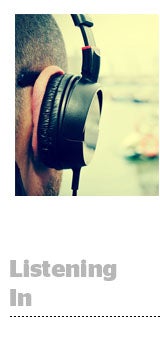 When Pandora announced its intent in November to acquire the assets of Rdio, it was reportedly an attempt to make up an ad revenue shortfall.
When Pandora announced its intent in November to acquire the assets of Rdio, it was reportedly an attempt to make up an ad revenue shortfall.
Though people increasingly listen to online radio, with 143 million each month this year (the number has doubled since 2010, according to Edison Research), streaming services are still working out approaches to advertising.
And so, in some ways, are the advertisers themselves.
“I think everybody is in the same boat of just trying to figure this thing out,” said Rob Griffin, global head of digital at the agency Havas. On the buy side, Griffin wants more programmatic creative with better targeting. On the sell side, Spotify and Pandora need to hook their existing solutions into the ad tech community – such as the DoubleClick or Sizmek ad servers. (Pandora hooks into DoubleClick for programmatic display, but not audio ads.)
Advertisers’ desire for integration shows that streaming audio has matured. It’s been around long enough that it’s now a crucial part of an audio plan (though not necessarily a media plan), said Pat Lord, VP of integrated investment at the media agency Universal McCann.
“[I]f you are buying audio, you can’t just buy terrestrial anymore: You need to get the digital layer in there,” Lord said. When using audio in an awareness campaign, she said, “you need the digital part or you will not reach anybody.”
Yet ad spend in streaming audio is still relatively low. According to Vincent Letang, EVP and director of global forecasting at MAGNA Global, terrestrial radio net ad revenues came in at an estimated $14.4 billion this year, while the total for digital radio – which includes both digital broadcasts of traditional radio and the broadcasts of streaming specialists like Pandora and Spotify – came in at just $2.1 billion.
Still, MAGNA’s estimates show a 3% drop in terrestrial net advertising revenue (NAR) since 2014 and an almost 19% increase in digital since 2014, hinting at a shift in focus. The company said it also has plans to start tracking streaming specialists like Pandora and Spotify separately from other digital radio. (Likewise, Kantar Media said it, too, plans to start measuring streaming ad spend in Latin America next year, further hinting at the changing landscape.)
Streaming Grows Up
Advertising on streaming radio used to be so cheap that agencies could go wild. “At one point you could afford six to every one terrestrial” spot, Lord said. But there was the risk of burnout, and driving listeners crazy. Griffin – making a connection between early streaming radio and early streaming video – recalls hearing six Dove soap ads while watching one show online. “It’s super cheap on the CPMs compared to the TV,” he said, “but what they don’t realize is by the end of the show, I hate Dove.”
Now, agencies are more mindful of burnout. To that end, Spotify caps advertising at three to five minutes per hour. Similarly, Pandora caps it at four minutes per hour.
“The value exchange of streaming radio is sensitive in that people are coming to the free versions of what we’re offering out there also based on the fact that they don’t want to be bombarded with a lot of advertising,” said Les Hollander, global head of audio monetization at Spotify.
Spotify has Sponsored Sessions and Pandora has Sponsored Listening. Both give users an allotment of commercial-free music if they watch a branded video. Pandora’s Sponsored Listening is intended “to preserve the value of a share of a voice for an advertiser over the share of an hour,” said Jack Krawczyk, VP of advertising product management at Pandora. One might say the same for Spotify’s offering.
Havas’ Griffin likes the movement toward these sponsored chunks of time. “Pay per time window, not pay per impression or pay per view,” he said, makes sense.
What’s Still Missing
“I think it’s cross-platform measurement against all products that would be universally accepted by marketers and approved by the 4A’s [The American Association of Advertising Agencies],” Hollander said. “I think that’s the holy grail.”
Lord agrees. “I look at everything from an impressions basis. … [E]ven though the terrestrial universe is not the same as the digital universe, and it’s kind of like adding two different species together.”
In particular, Lord said, “Nielsen finally finding a commonality to measure TV, radio,” digital and other channels “would be incredible.” It would “allow agencies to buy really the big picture and not have different people buying similar products for similar things,” she said.
“Advertisers want a dashboard with everything. All too often you’ve got these spot solutions,” Griffin said: Sizmek to do X, another company to do Y. “How do I get a single view of all that?”
The industry needs to be “cognizant that advertisers struggle with using all these spot solutions now,” he said, but it doesn’t mean another product is the answer. “While Adobe [Marketing Cloud] can do everything, they don’t do everything best in class as much as these spot solutions can.”
Vendor fragmentation is still a big problem to solve, especially if advertisers decide to spend more on streaming audio.
Griffin also threw out a number of ideas for how to improve tracking and how to also take advantage of what streaming can do that terrestrial can’t. He wants a “third-party ad service so I don’t rely on the publisher.” And he wants more cross-channel functionality, such as an ad where a mattress company’s 800 number gets added to Passbook, or a way for listeners to add a reminder to their calendar to call the next day — or even a button to click that reads, “Have the advertiser call me tomorrow.”
“To me, that’s a smart way to show the advertiser, ‘We had this much weight, we had this much frequency, X number of people played the ad all the way through and didn’t skip it, X number of people skipped it, X number of people added it to their calendar,’” he said.
Griffin also stressed the need to improve in-app tracking, so that advertisers don’t lose the click. Instead of taking the listener to the advertiser, he said, “just load the ad on my phone.”
Who’s responsible for coming up with the solution? “To me,” Griffin said, “that’s on Pandora and Spotify, the streaming players, to reach out with the existing technology.













